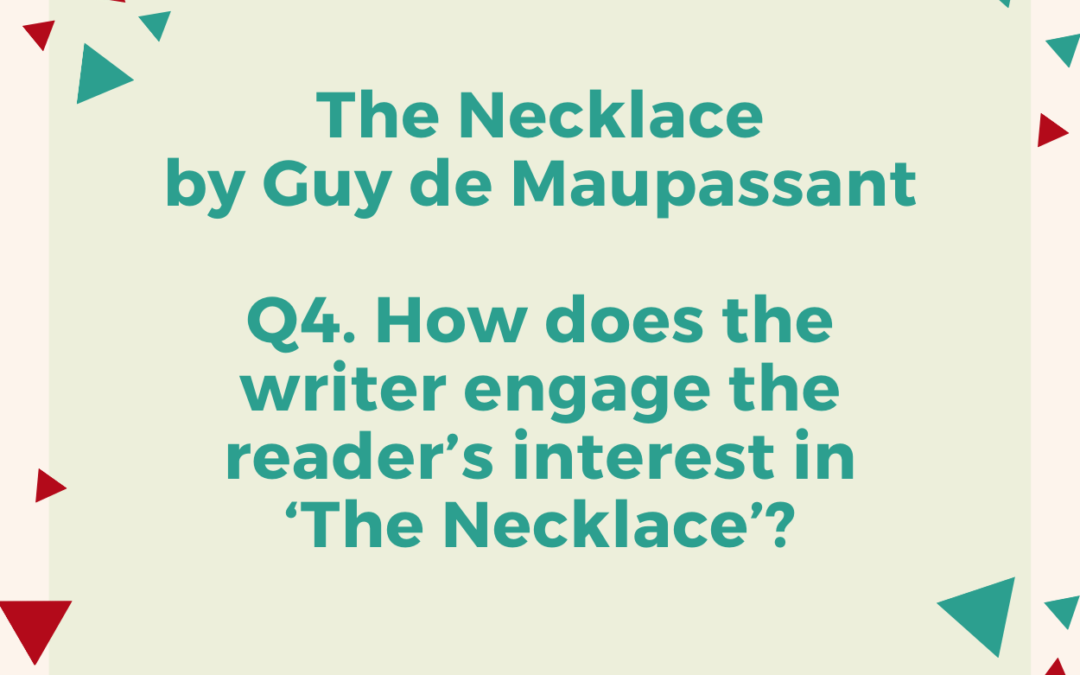Edexcel English IGCSE: The Necklace by Guy de Maupassant
Q4. How does the writer engage the reader’s interest in ‘The Necklace’?
You should refer closely to the text to support your answer. You may use brief quotations.
Edexcel English IGCSE Model Essay by an Expert
In ‘The Necklace’, the writer engages the reader’s interest by inducing frustration with Madame Loisel, building tension, and providing a powerful moral to the story.
Madame Loisel is frustrating, because she is so dissatisfied with what she has. The hyperbolic language describing her discontent at the start of the story makes the reader’s wonder why she is so affected by her surroundings: she is “unhappy all the time” and experiences “torture”. The unreasonable nature of her pain is highlighted by contrasts with her kind husband, who talks excitedly about his stew in short exclamations – “Ah! Stew! Splendid!” – which contrasts with the extended descriptions of what Madame Loisel would rather be having. Madame Loisel’s discontentment engages the reader by inducing frustration and anger.
Tension is built throughout the story, particularly after the necklace has been lost, causing the reader to wonder how the situation will be resolved. In the description of the search for the necklace, a number of short sentences are used to effectively portray to the reader the severity of their situation. For example, the statement, “It cost forty thousand francs,” reflects the brutal nature of this fact, encouraging the reader to reflect on how they could possibly raise this sum. The reader is particularly upset by the fact that the responsibility falls mainly on the husband; emotive language is used to emphasise his suffering, such as “sick with worry”, “grim poverty” and “mental torture ahead”. This preparation for a terrible life evokes the reader’s sympathy, and again builds tension concerning how they will cope.
The story has a powerful moral, which encourages the reader to engage with the lessons that can be learned from the story. A great irony is revealed at the end of the story: that the original necklace was cheap, imitation jewellery, and therefore their long struggle through poverty was completely unnecessary. The writer ends the story with Madame Forestier’s shocking revelation about the truth behind the necklace. By finishing with this bombshell, the writer allows the reader time to stop and reflect on the implications of this news. It shocks the reader and causes them to reflect on the lesson that we should not place too high a value on material possessions. Madame Loisel considered material possessions to be the key to happiness, and as a result, she literally valued the necklace far too highly. By including a moral in the story, the writer engages the reader by causing them to reflect on their own life and attitudes.
This story evokes a number of emotions in the reader, including frustration, sympathy and shock. The story also has an important message which encourages the reader to reflect on the broader issues of happiness and materialism.



